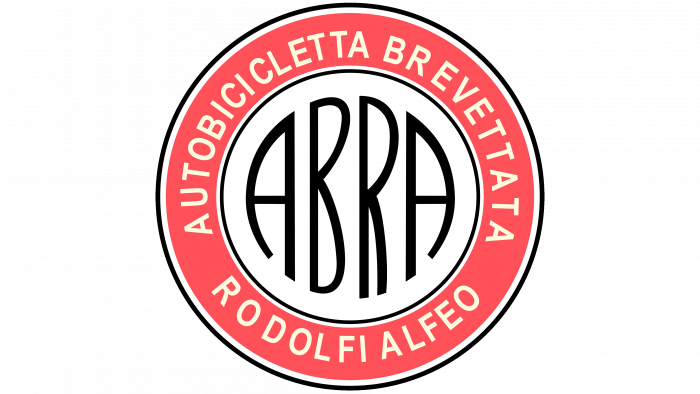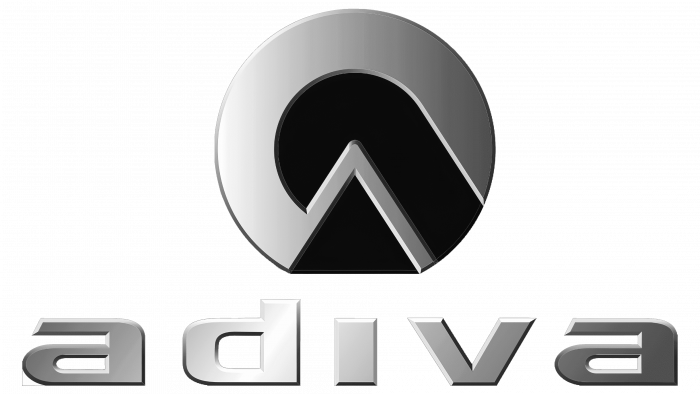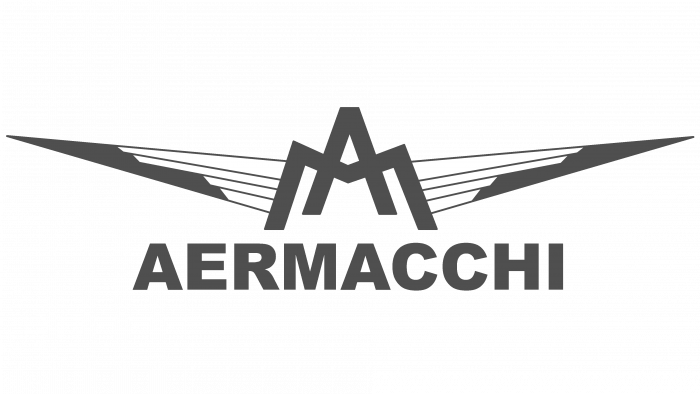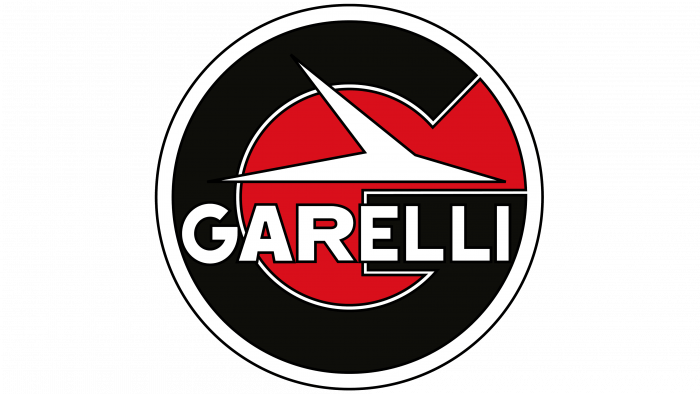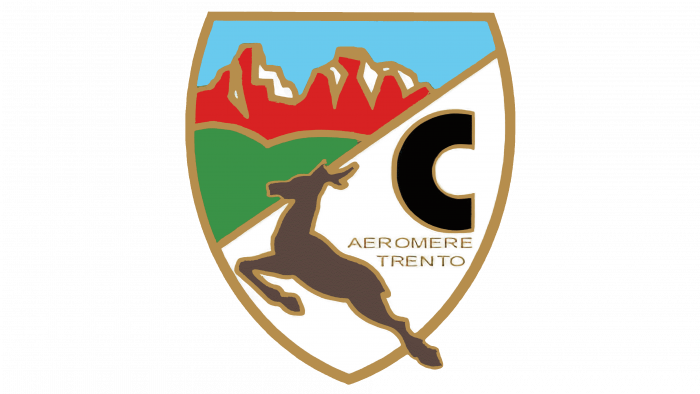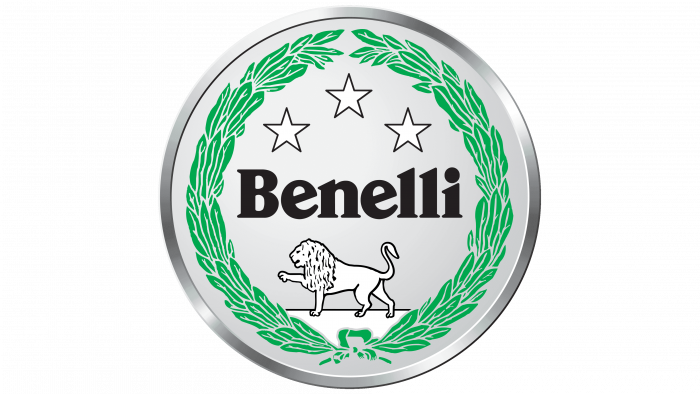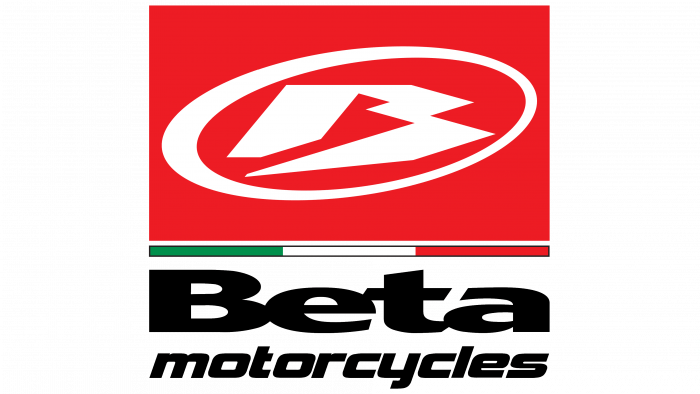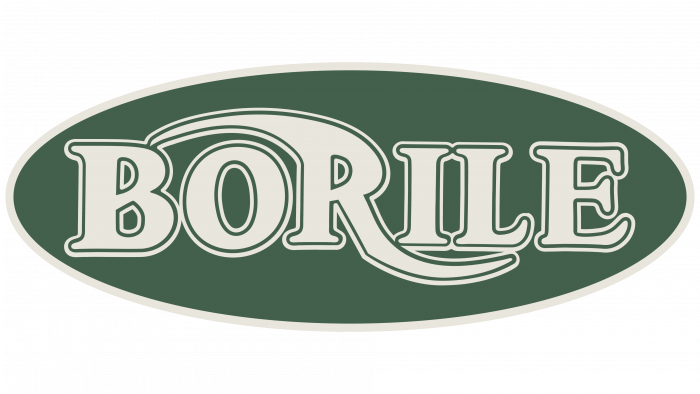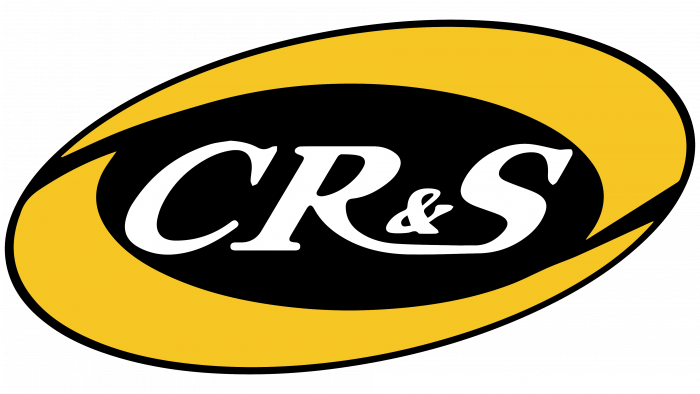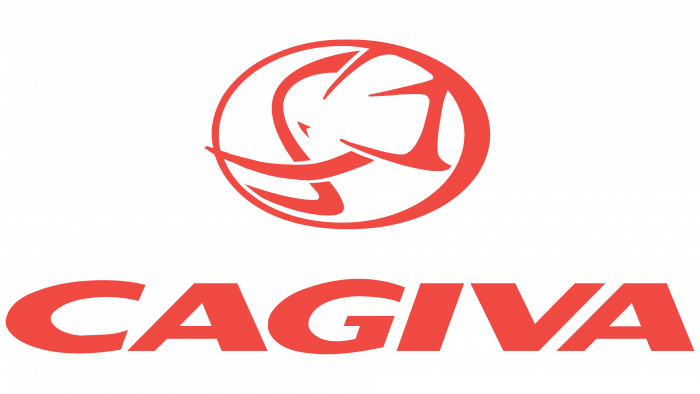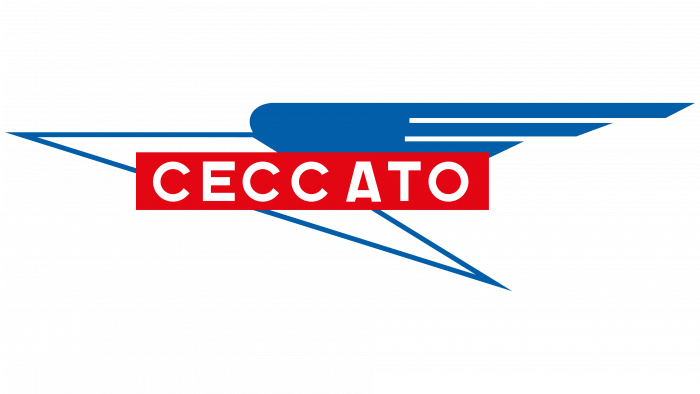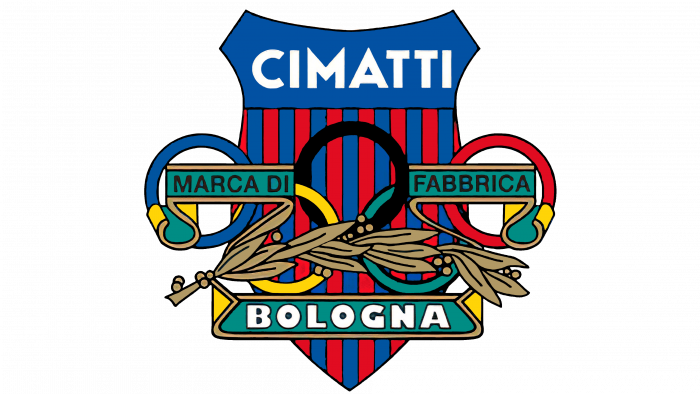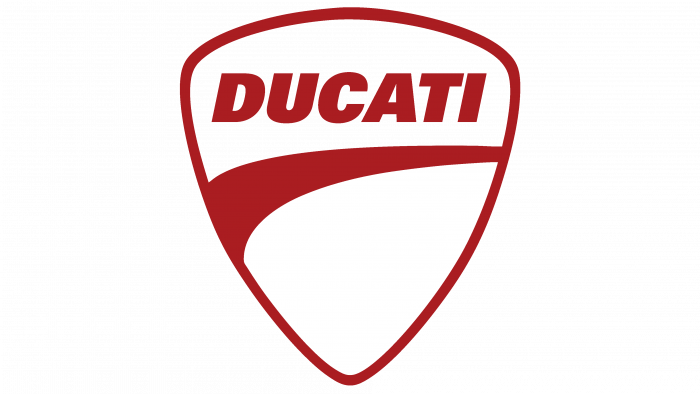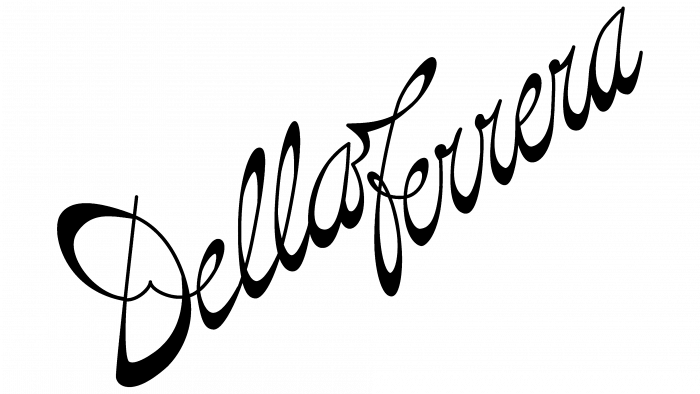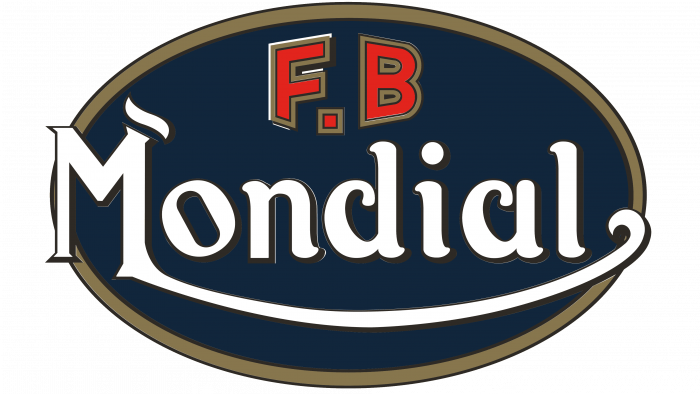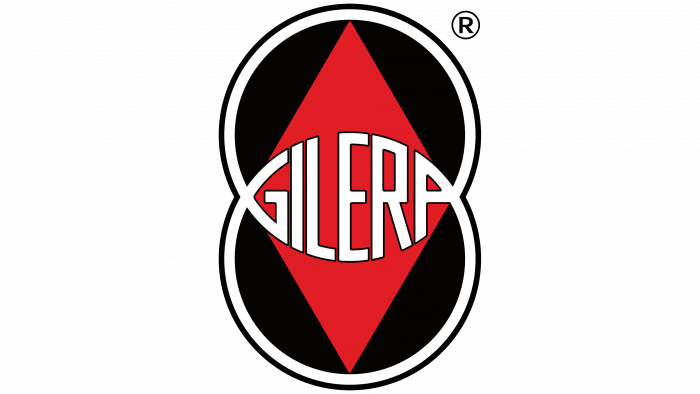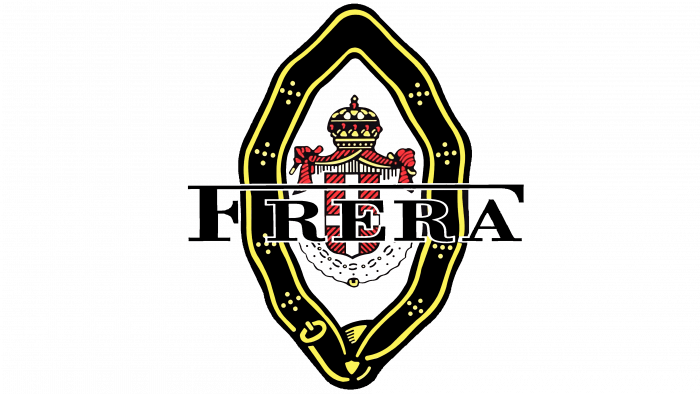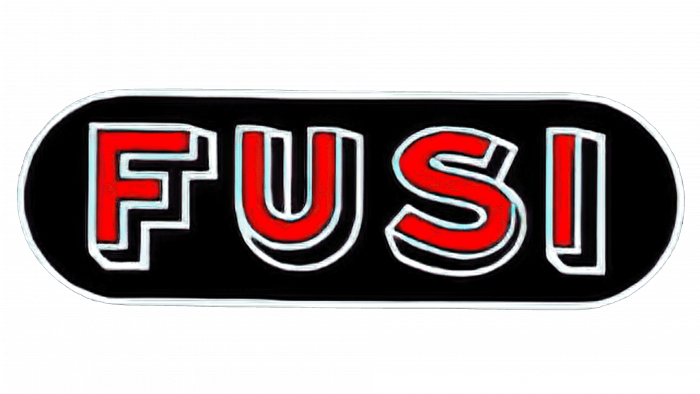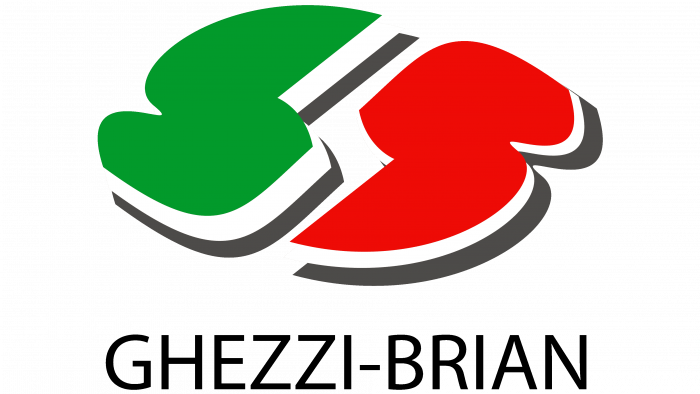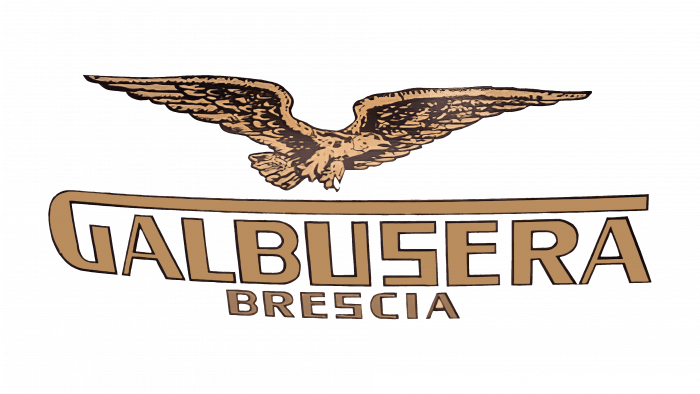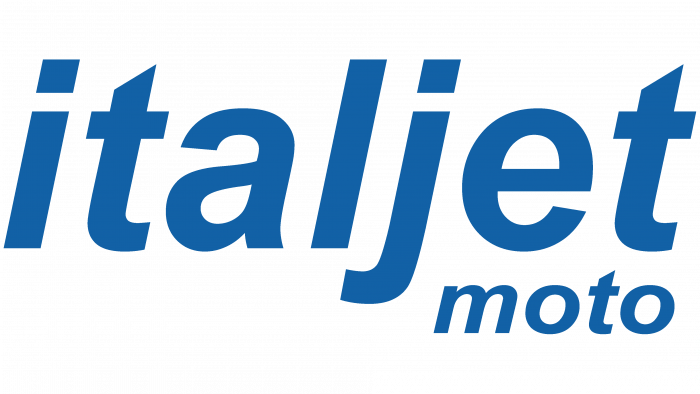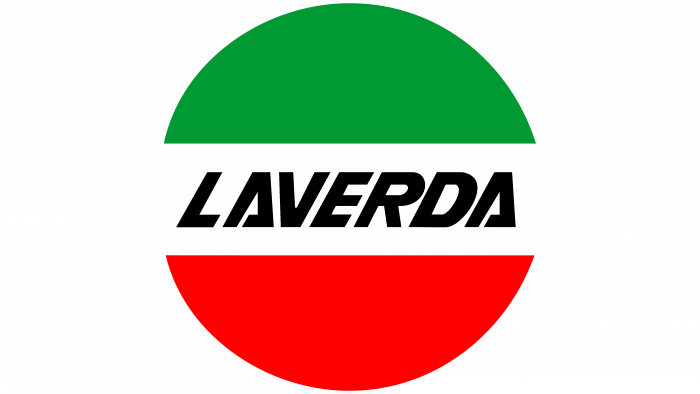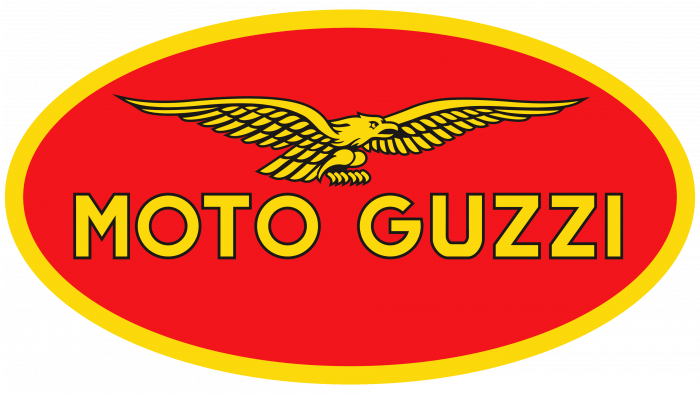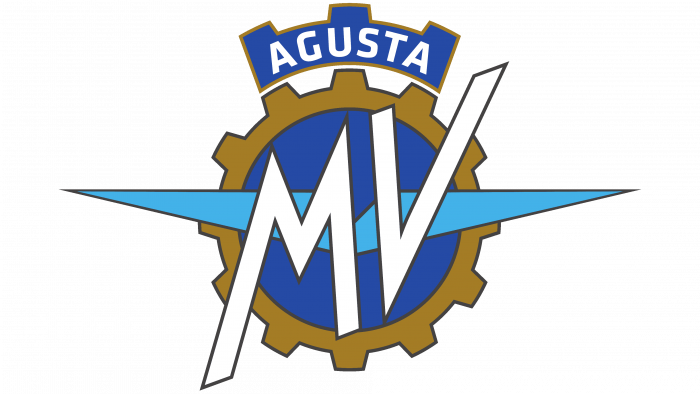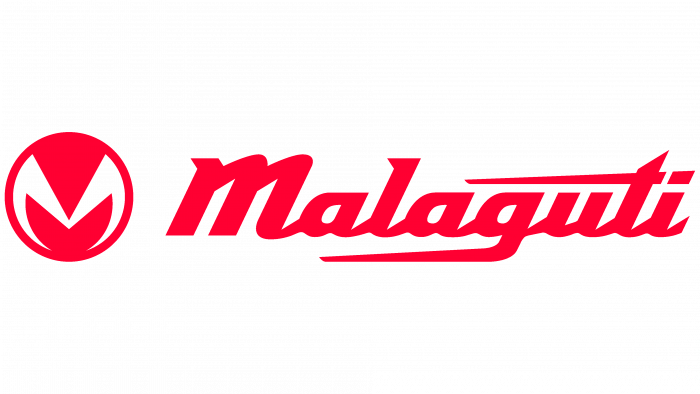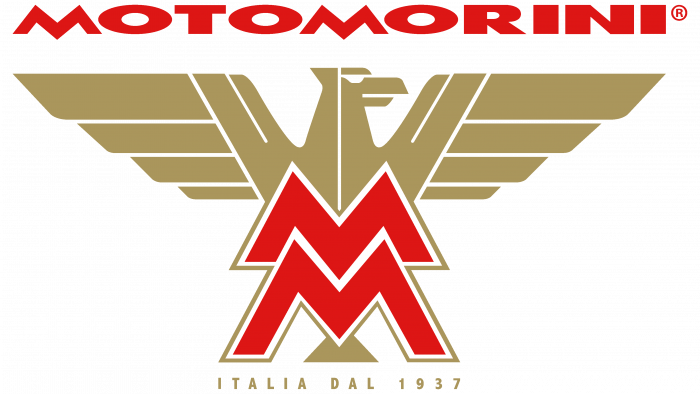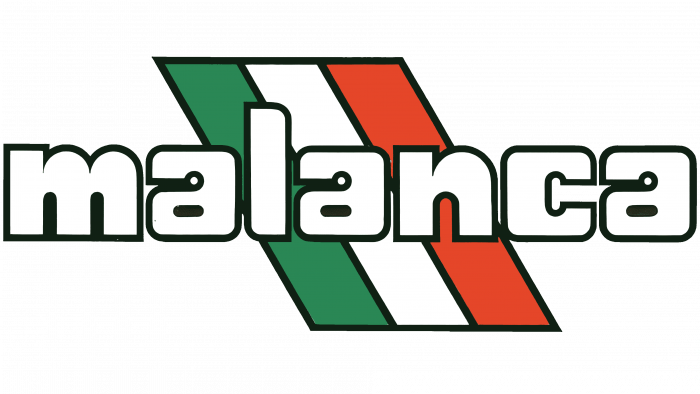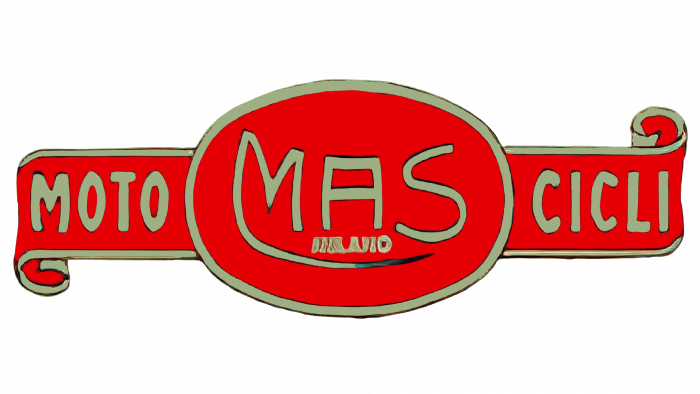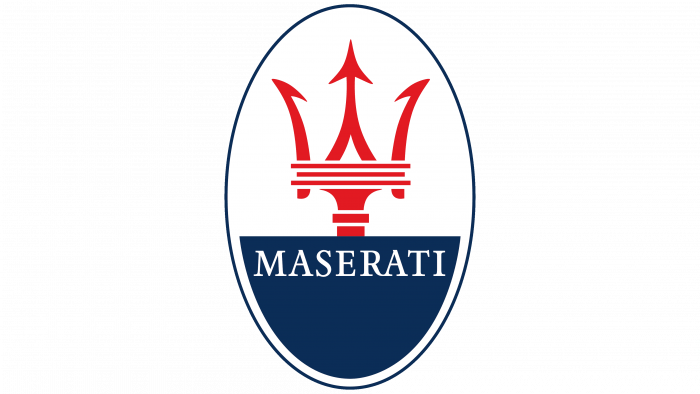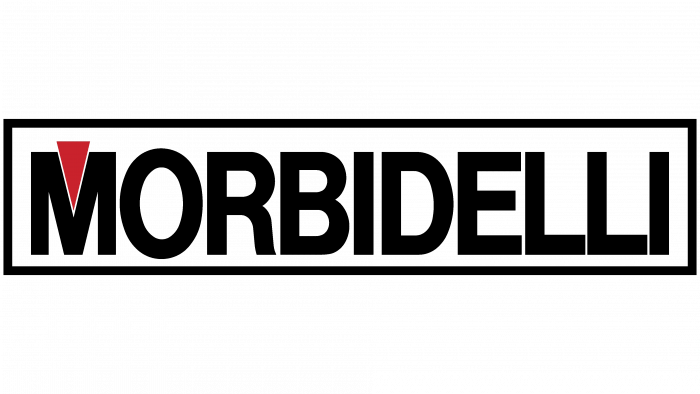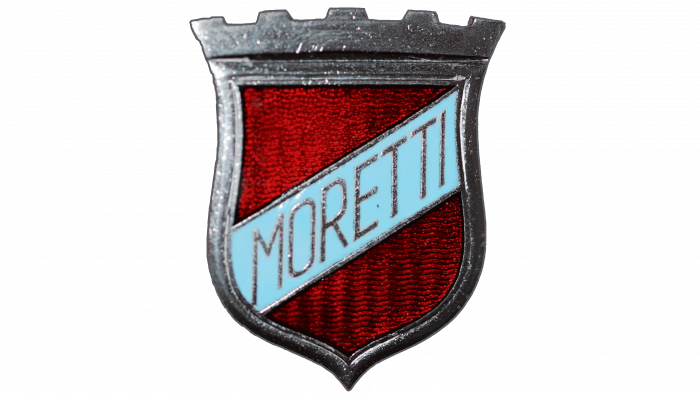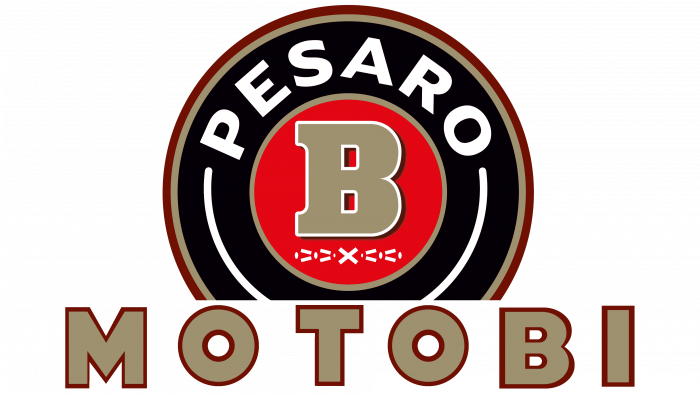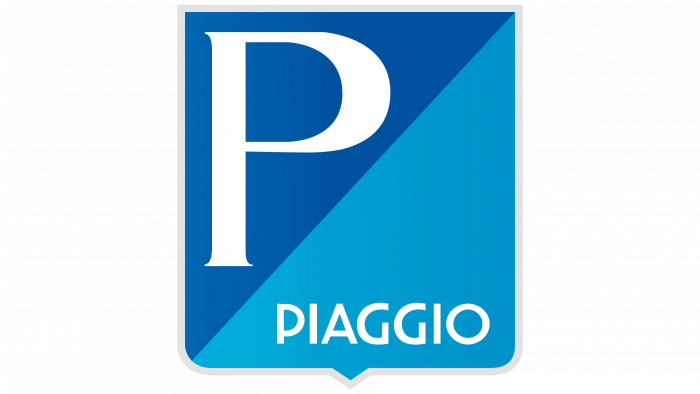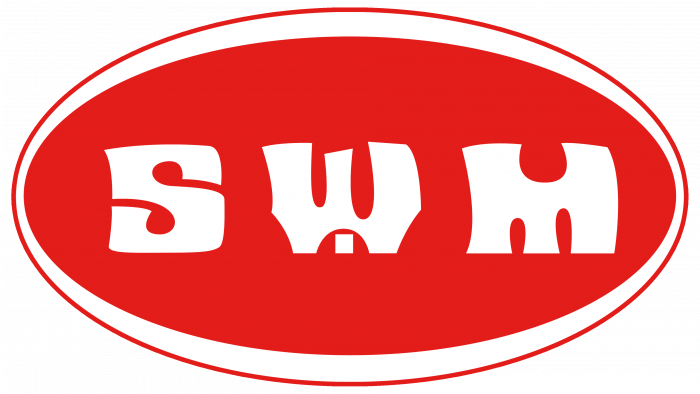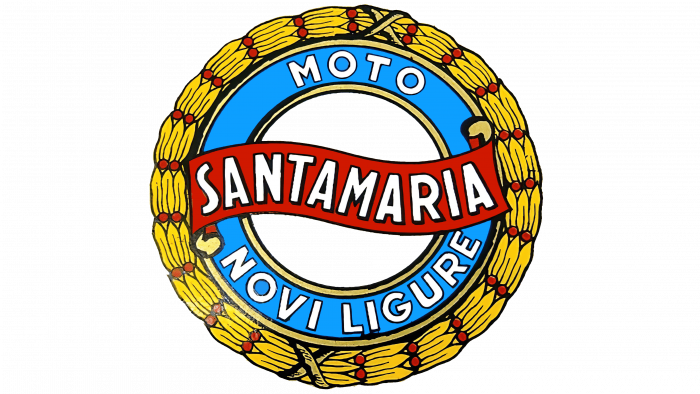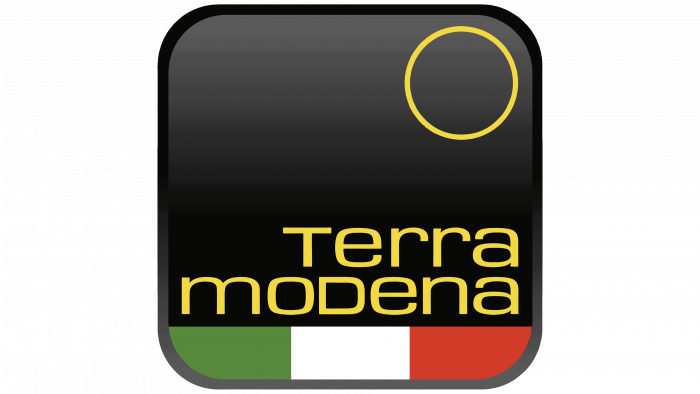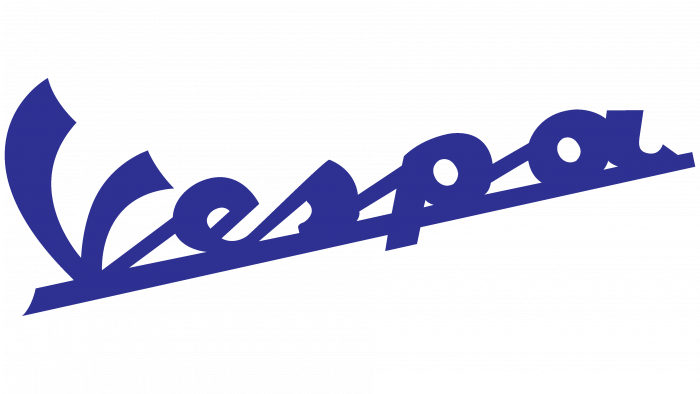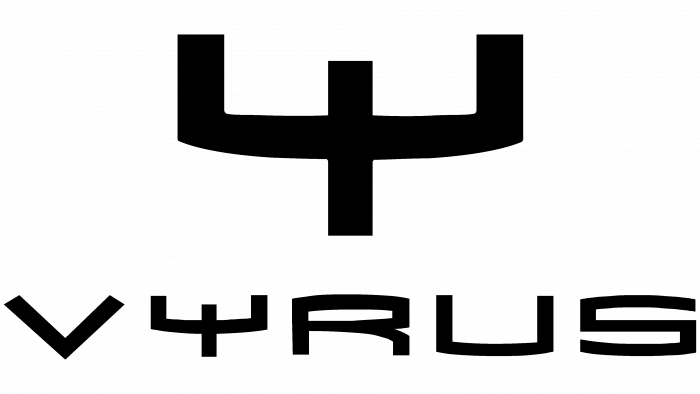The Italian motorcycle industry stands out among the world’s manufacturers for its unrivaled beauty and reliability. The country, where many of the brands that later became famous were created, is characterized by the highest demand for products worldwide. Ducati or MV Agusta, Guzzi or Italjet Moto Srl, Moto Guzzi, and Benelli are a few Italian manufacturers whose names are familiar even to those far from motorcycling. Most of the Italian brands have become world legends in this production field. Italy is not just a sunny country with a unique climate and friendly, hospitable people. It is the birthplace of many outstanding designers, engineers, motorcycle racers, and mechanics. These people are the basis for the successful development and popularity of the Italian motorcycle.
What are Italian motorcycle brands?
Italian motorcycle brands are the leaders of the world market. Among them are quite famous names like Benelli, Moto Guzzi, Italjet Moto Srl, MV Agusta, and Ducati. But there are also less popular companies that have managed to be forgotten: Abra, Autozodiaco, Cagiva, and others.
Motorcycle production is an important area affecting the country’s economy today. Unlike other European manufacturers, which have ceded the palm of superiority in this field to Japanese, Chinese, and even Indian brands, the Italian motorcycle industry continues to develop. It is showing good acceleration at the moment. Between January and June 2021 alone, more than 140,000 motorcycles of various types were sold, far exceeding the figures of the last decade.
Abra
The Abra brand has not been the Italian “long-lived” in the motorcycle industry. It existed for only four years – from 1923 to 1927. It was distinguished by the release of unique motorcycles and power units that were only produced independently. The tragic death of the company’s founder in 1927 led to the stoppage of all production and the termination of the company. DKW bought the rights to production and the company itself from the founder’s relatives, Abra. The received technology with some modifications DKW applied in motorcycles of its brand.
The emblem of the company has a circular shape. The shape of the circle was chosen as a symbol of infinity, unity, and cyclicity, meaning rhythm and constancy of movement, which were the principles of the Italian brand Abra. The inner space of the logo consists of several circles. The inner circle is filled with red color as a symbol of movement and the action of fire. The red color was an accent color; it contrasted with the smaller white circle with the brand name. The name is in the original design and black. The letters in height and on the sides repeat the circle shape with their curves, forming a circle composition.
Adiva
One of the young but promising Italian brands in the motorcycle industry is Adiva, which was founded in 1994. Serial production of city scooters on 2 and 3 wheels began in 2001, and in 2008, their model AD3 received an honorary prize at the EICMA exhibition in Milan. The model was characterized by increased maneuverability and stability, which is important for urban conditions. This was provided by the original design of the chassis, which provides two wheels at the front and one at the rear. All models of the brand are equipped with a retractable, weatherproof roof. The company’s headquarters is in Milan, and its production sites are in Malaysia and Taiwan. Distribution centers have been opened in Japan, China, and Hong Kong.
The company’s ambitions supported the desire to enter the market, which paid great attention to forming its unique style. It is based on innovation, modern design, and enthusiasm. These three components were reflected in the Adiva logo, which formed a visual perception of integrity, perfection, safety, and versatility, characteristic of the whole model range of the Italian brand. Visually, the emblem is a circle, which has a volumetric bulge. The circle has an even lower part, supported by an arrow-shaped element directed from its top to the center. The emblem is a stylized image of a wheel connected to a fork. This element complements this visual perception of the composition and simultaneously forms the contours of the letter “A” – the first letter of the brand name.
Aermacchi
The history of the Aermacchi motorcycle brand began in 1912 with the formation of the Newport-Macchi company by its founder, Giulio Macchi, from the town of Varese, which became the center of the aviation industry in Italy. The company became involved in aircraft used extensively in aerial combat during the First World War. During the war, it was renamed Aeronautica Macchi, continuing to grow rapidly in this area. After the war, the company refocused on producing three-wheeled trucks and motorcycles. These were produced under the Aermacchi brand until 1978. Although the brand was acquired by Harley-Davidson back in 1960, the new owner retained the original brand and then adopted the dual name. In 1978, Harley-Davidson removed the reference to the old brand.
The company logo remained true to the history of the brand’s development. It consisted of the first two letters from each word of the brand name grouped one into the other, where the descending top lines of the letter “M” form the crossbar of the letter “A.” To the right and left are elongated wings designed as two triangles with vertices raised upwards. Both letters and the Aermacchi brand name are in Arial Std Black.
Agrati Garelli
At the end of the XIX century, Antonio Agrati from Cortenuova di Monticello Brianza opened a forge. The beginning of the twentieth century adjusts the demand for the company’s products. The founder passes it on to his sons, Clodoveo, Luigi, and Mario, who produce highly sought-after electric motors and bicycle parts. The tragic deaths of all three led to the company being taken over by 16-year-old Carlo Agrati. In 1958, the company completely refocused on the production of electrically powered bicycles and, at the same time, launched the first Capri scooter. The launch of the Capri marked the beginning of the full production of scooters and mopeds. The Agrati brand was independent until 1991, when it merged with Garelli, based in Lacciarella. All motorcycle models were released under the new name – Agrati Garelli.
The emblem has a traditional Italian motorcycle brand circle shape, symbolizing infinity, unity, and cyclicality. In the center of the circle is inscribed the letter “G” in black, made in a circle on the inside. The free space inside it is filled with alizarin red color, providing a contrasting combination with black. This combination of achromatic black and red, the main color palette’s color, strongly impacts a person, attracting the eye and attention. The brand name is in the Garelli font at the bottom of the emblem.
Aprilia
Aprilia is a brand known today not only in Italy but all over the world. Aprilia is part of the world’s fourth largest industrial group, Piaggio, producing two-wheeled vehicles. The company was founded in 1945 in the Venetian city of Noale by Alberto Beggio to produce bicycles. The brand’s name was a tribute to the founder’s favorite model – the Lancia Aprilia car. The year 1960 marked the release of the first Sport Uomo moped. In 1968, the ownership of the company was transferred to the founder’s son Ivano Beggio, who started the production of mopeds, resulting in the market launch of three models at once – Colibrì, Daniela, and Packi, as well as the first Italian off-road vehicle Scarabeo. Today, the president and CEO of Piaggio is Roberto Colaninno.
The company’s logo is a vivid example of its ability to properly approach its brand promotion. It is simple and laconic – nothing extra distracting the eye. The emblem is the company’s name, presented graphically in Latin capital letters. An important accent is the red background, which was chosen to associate with the grief and sorrow of many people who suffered the hardships of World War II. The red color symbolizes masculinity and resilience inherent in the brand’s founder and the company’s spirit. The font used for the lettering is Neue Haas Grotesk Display 65 Medium.
Aeromere
After the end of World War II, the victorious countries banned the Axis countries from supporting the production of military equipment. This also affected Caproni’s concern, which was engaged in the production of combat aircraft in Trento. Founded in 1910 by engineer Gianni Caproni, the company began to produce heavy bombers, analogs that did not exist. Even the United States used them in its air force in 1918. After World War II, Caproni started producing light motorcycles under the Capriolo brand, with which its new motorcycle was associated. The founder’s death in 1957 led to a complete rebranding of the company. It gets a new name, Aeromere, and a new emblem. In parallel with the production of motorcycles, the company produces light airplanes and gliders. In 1964, the company was acquired by the Laverda concern.
The company’s emblem, which was used on motorcycles of its production, very accurately reflects the spirit and hopes of its founder. The heraldic shield with sloping sides shows a small deer in a jump, which gave the name to the brand. The shield is divided diagonally into two parts. The upper part is framed in black with a red flame in the field. In the lower part of the shield – on the right – there is a white Latin letter “C” (the first letter of the brand name), and below it, in small print, is the name of the founder and the location of the company Caproni Trento. On the left is the figure of a deer.
Autozodiaco
In 1968, the production of buggy cars was founded in Bologna. The Autozodiaco brand existed for only 13 years, during which it made a small contribution to the Italian motorcycle industry. In the mid-70s, the company released a motorcycle, Moto Zodiaco Tuareg. Its important difference was the absence of a generator and the presence of a mechanical start from a cord. To ensure passability, it used large pneumatic tires. In 1978, the company ceased to exist.
The company’s emblem was a circular sign, the circumference of which was formed by black and white checkers. In the lower part of the circle arc was the name of the brand Autozodiaco. Inside the black field was an inscription in red Latin font – ALL – CARS, resting on black and white checkers. The text is underlined with a thin red line to the first letter, slightly larger than the rest of the font. Next to the sign was the text name of the brand in an inflated “cartoon” font, like a symbol for inflated motorcycle wheels. The font looked particularly eye-catching and memorable when applied to a black background. The letters overlap each other as if trying to get ahead of the next one, which gives the sign some cheerfulness and appeal.
Benelli
In 1911, the Italian brand Benelli was founded. The appearance of the company is quite original. The brand’s founder was a woman – a mother of six children whom she taught to repair bicycles to earn a living. Noticing the growing demand for bicycles with a motor, the company developed its bicycle engine in 1919. This continued with the production of motorcycles for sports racing, in which the two brothers began participating. Their successful performances in 1938 made the first three models particularly sought after. 2005, the company went bankrupt and was bought out by the Chinese concern Qianjiang Group. The concern manufactures new products under the Benelli brand in China, producing lightweight, small motorcycles and scooters in high demand in Asia.
Today’s Benelli logo has a more “Chinese” look. Paying tribute to the historical form and some elements characteristic of the company’s mid-20th century logo, the appearance has undergone significant changes. The emblem is a three-dimensional silver circle. A laurel wreath of dark green saturated color occupies the inner field on the circumference. In the lower part is the figure of a white lion standing on three paws with the right front part raised, expressing a warning. Above it is the brand name Benelli in black lettering, and above it are three five-pointed white stars in the shape of a triangle.
Beta Motor
The Beta brand dates back to 1904 as Societa Giuseppe Bianchi, specializing in the production of bicycles. Gradually expanding and introducing new types of products, in 1940, the company carried out a complete re-equipment of production with modern equipment and changed its name to Beta. It consisted of the initials of the founder’s son, Enzo Bianchi, and his father, Arrigo Tosi, who was the company’s chief engineer. The brand produced its first motorcycle with an engine in 1948. The transition to motorcycles occurred in 1950 when the first full-fledged motorcycle Ital JAP was released. The brand’s products proved themselves in off-road racing. The company’s fame was brought by its models for mototrials.
The latest rebranding of the company has led to a redesign of the logo, making it more suitable for modern display and perception by a new generation of users. The red rectangle logo symbolizes success and consistency, forward movement, and necessary rebirth. In the center of the rectangle is an image of a white oval of uneven thickness, angled upwards. The oval demonstrates movement and is visually perceived as a wheel moving at high speed. Inside the oval is the letter “B,” the shape and direction of which reinforce the visual sense of speed and acceleration at the same time. All these marks have a band with the colors of the Italian flag. Below is the full name of the Beta Motor brand. The word “Motor” is typed in small type and is centered below the first one. Combining black and red colors with white creates a very effective visual contrast. The red becomes the accent color, while the black and white form a definition, showing will and balance.
Borile
In 1988, the Borile brand, founded by Umberto Borile from Venice, began its involvement in the Italian motorcycle industry. The company was small and could not boast of mass production. It wasn’t until 1997 that the Borile B500T brought the company fame and glory. Within two years, the world was conquered by two unique models – the B500CR cafe racer and the B500MT motorcycle. But the best-selling model was the Borile Multiuso. The annual sales volume of this small manufacturer is more than 50 units of equipment, which can be customized for a particular customer.
The company’s logo demonstrates a pronounced corporate style. In the emerald-green ellipse, the trademark name is in white Latin font. Each letter of the name has an emerald-green border. The text, executed in lowercase letters, has an individual design. The central figure is the letter “R.” Its upper and lower parts resemble the stylized shape of a motorcycle fairing. The logo’s simple and uncomplicated design positively impacts its visual perception and easy memorization.
CR&S
The founder of the relatively young Italian motorcycle brand CR&S is Roberto Crepaldi. For a long time, being a representative in Italy of leading motorcycle brands in the world, such as Harley-Davidson, Triumph, and Norton, Roberto constantly thought about creating his motorcycle. In 1992, Crepaldi opened his own company selling retro motorcycles of the 60s and 70s. At the same time, Crepaldi starts taking orders for unique models, the main designer of which is himself. An additional direction is accepting orders for the remodeling of old models. CR&S production is located in Milan and fulfills up to 100 annual orders from Russia, the USA, Japan, Australia, and China.
For the CR&S logo, Roberto chose a stylized wheel in motion. This perception is ensured by the shape of the outer and inner ellipses, the different inclinations of which reinforce this impression. At the same time, this effect is supported by two black half arcs emanating from the inner black ellipse. The half arcs are turned in different directions and arranged symmetrically concerning each other. These elements divide the space of the ellipse into two equal parts. There is a sense of a wheel rotating at high speed, the spokes of which merge. The central element of the emblem is the CR&S brand abbreviation in white-on-black space.
Bimota
1973 is the year in which Bimota was founded by three friends, Valerio Bianchi, Giuseppe Morri, and Massimo Tamburini in Rimini. The brand’s name is an abbreviation of the three founders’ surnames. Initially, the company developed exclusive chassis designs for existing motorcycle models, primarily sports. In the 70s of the last century, the assembly of Lamborghini motorcycles was added. In the early 80s, Bimota began modernizing motorcycles of the world’s leading brands, Yamaha and Ducati. After 2003, the factory released the Bimota DB5 Mille, which, like all of the company’s products, was ahead of its time. The release of DB5 once again confirmed the main tenet of the brand – creating models of the future with bright designs and unique technologies.
Bimota made its logo a sign that fully corresponds to the spirit and style of the brand. A laconic but effective visual presentation characterized the emblem. The main colors of the symbol are red and black. The first is the color of risk and extreme, movement and activity, energy and courage. It inclines the audience to decisive actions. Black is characterized by the demonstration of elegance and luxury at a decent quality. Tandem is characterized by strength but some anxiety. This effect is softened by the white element separating the two colors. The red color seems more vivid and accentuated, attracting attention. At the same time, this combination evokes associations of passion and elegance. The emblem is the first letter of the name “b.” Below is the black text of the brand’s full name – “Bimota.”
Cagiva
For some time on the Italian motorcycle market, the American Harley-Davidson subsidiary was bought by brothers Claudio and Gianfranco Castiglioni in 1978. Before that time, the brothers owned Cagiva, a company that manufactured motorcycle equipment and spare parts. In 1978, they immediately introduced two new racing models to the Italian market after purchasing the Harley-Davidson subsidiary. In just one year, production grew to 40 thousand products per year. The beginning of the 1980s was marked by the release of several off-road vehicles, which opened a new production series. The MX model became the flagship of motocross cars. Today, Cagiva is a huge, successfully developing concern.
The emblem of Cagiva is made in a modern conceptual style with an active red color. Thanks to it, the emblem acquires a spectacular visual impact on the viewer, forming a feeling of extreme risk, a charge of powerful energy, and courage in decision-making. The composition, enclosed in an oval with a variable contour thickness, evokes a sense of reckless dynamics and movement at high speeds. The brand name is placed below this mark in a font similar to the Egyptian Wide. The right slant symbolizes speed and acceleration. This impression is reinforced by the elongation of the letters in the direction of forming a visual movement.
Ceccato
The Ceccato brand is one of the prime examples of innovative Italian motorcycle companies formed after World War II. The company’s founder was Pietro Ceccato, whose profession as a pharmacist was quite far from motorcycle manufacturing. However, Ceccato’s fascination and passion for control and engine ideas outweighed his professional affiliation. The Giro d’Italia motorcycle model demonstrated the first significant success, equipped with a single OHC powerplant. The engine was a joint development with students from the Taglioni Technical Institute. Production of motorcycles was discontinued in the mid-1960s.
As an emblem, Ceccato chose a stylized image of a flying bird, the body of which was made in the form of a triangle. To the top of the figure were attached wings, under which there was a red plate. The name of the Ceccato brand was written on it in white Dymond Regular font. This choice of colors in the overall composition has a very strong visual impact. The most effective psychological effect distinguishes this combination. White and blue colors give restraint and style. The warm and rich red color gives dynamism to the whole composition.
Cimatti
For almost 50 years, since 1937, the Cimatti brand has presented the production of bicycles, mopeds, and motorcycles in Italy on the international market. Marco Cimatti named the new brand after himself, as he was a cyclist and represented the country at the Olympic Games. Like most pre-war businesses of this type, the company began by producing bicycles. In the mid-50s, setting up mass production, the brand produced its first moped. By the beginning of the 60s of the last century, motorcycles went into production, and the Sports Luxury model was in great demand. The next model range of the company became racing motorcycles – Kaiman Cross. From 1972 to 1977, the company produced two more motorcycles – road and motocross. In 1984, the company was closed.
The logo of the brand consists of a large number of elements and colors. In the center, in the foreground, there were 5 Olympic rings. They were made in red, yellow, green, light, and dark blue colors. A horizontal branch of bronze laurel overlapped the lower rings. At the top of the first and third rings are plates in the form of unfolded scrolls, and inscriptions are made – MARCA DI in the first and FABBRICA in the second. Under the rings on an oblong plate is placed the name of the city BOLOGNA. All this composition of elements was placed on top of the heraldic shield with vertical blue and red stripes. At the top of the shield is the name of the brand.
Ducati Motor Holding SpA
So, Ducati Motor Holding SpA was a division of the Ducati Group. The division was responsible for the development and production of motorcycles. The headquarters of the division was located in Bologna. Since the opening of production, the company specialized in high-performance machinery. They are characterized by two-cylinder, four-stroke power units with “L”-shaped cylinders and desmodromic valves. Today, the company belongs to the German concern Audi AG.
The Ducati emblem is the embodiment of the professional promotion of goods. It became an example of the effective use of modern technologies in visualization. The emblem is characterized by simplicity and brevity, having in its image only one element – a heraldic shield of bright red color. In the upper sector of the shield, the brand name is silver-gray. The slight slope of the font to the right imitates the tension before the start and the effect of moving forward.
Della Ferrera
Motorcycle manufacturer from Turin with a 39-year history. Della Ferrera became famous for its machinery, on which it won the Trofeo Turistico Nazionale in Cremona and other competitions before the First World War. Athletes widely used its products, which brought the brand to the leading position among Italian motorcycle manufacturers. Stable and even successful development of the brand in the thirties of the twentieth century was broken by the outbreak of World War II. The company could not recover. Post-war economic recession in the country, devastation, and sanctions against the leading industries of the Axis countries led to the closure of Della Ferrera in 1948.
In the history of the Italian motorcycle industry, this brand remained memorable for its original motorcycle design and logo, characterized by aristocracy and flamboyance. In its day, the brand was so recognizable that it didn’t need any additional spectacular visual impact on the consumer. The company’s logo was the brand’s full name in a beautiful calligraphic font with vignettes of black color – strict, laconic, aristocratic. Both words flow smoothly into each other – the monogram from the last letter of the first word joins the beginning of the first letter of the second word. The slope from left to right symbolizes movement, and the direction of the composition from top to bottom – confident aspiration to victory.
Energica Motor Company
One of the modern high-tech brands in the motorcycle industry is Energica Motor Company. The brand was created to develop and manufacture motorcycle technology based on electric motors in 2010, with a research center and production facility in Modena. The company was founded by CRP Group Corporation, specializing in material processing using CNC and modern laser technology. The official name Energica Motor Company was registered in 2014 when the company completed the production of the first model from the Energica Ego range of eco-friendly motorcycles. They were first unveiled at the Top Marques exhibition in Monte Carlo.
The Energica Motor Company logo was created with the specifics of production and modern visualization methods in mind. It is based on a symbolic image of a pulsating electric discharge, which smoothly arcs around the text below. The letters are made in the variant of “continuation” of oscillations, which provides their graphical incompleteness as if forming peak indicators. The last letter, “A,” is a transition to the schematic representation of the electrogram. The initial and final letters of the brand are saturated with a bright light green hue.
Fantic Motor
Since 1968, the Italian motorcycle manufacturer Fantic Motor has been in domestic and foreign markets. The company specializes in producing and exporting motorcycles that are more oriented to sports areas – endurance, karting, and three-wheeled minibikes. A new light motorcycle model, Caballero, was launched quickly. In 1977, this brand established the production of trial motorcycles, which brought the company to the leading position in producing such models. The real masterpiece of the company is the Fantic motorcycle. Today, the company is developing a new direction – eMTB electric bikes.
The company’s logo is the shape of a coat of arms, historically used in the coats of arms of medieval cities. The outline of the shield and the first row of the stylized tire track in the form of vertical rectangles, depicted in the inner space of the sign, are made in purple. Below them is the second row of imitated tread track in bright red. Above them is the brand name. The font is individual. Two words are placed, one below the other, aligned on the left edge. The letters “F” and “T” in size correspond to the height of both words and play a unifying role. Thanks to the contrast, the composition attracts attention, putting the necessary emphasis on the brand name.
FB Mondial
FB Mondial first announced itself in 1936, when the Boselli brothers opened their factory in Bologna. The Italian company became the most famous brand for producing Mondial sports motorcycles. The brand received its official status in 1948. Throughout its existence, the brand continued to be ahead of its time, thanks to high-tech developments. FB Mondial products gave riders victory in the world championships five times until 1957.
The FB Mondial brand had a memorable logo that combined aristocracy and luxury. The simultaneous use of black and gold colors ensured this perception. The brand name was inscribed in a black oval with a golden outline. The accent is formed on the brand name and made in the original style. An arc covers the whole text from the first letter and ends with a monogram. The letter “O” had the shape of a bolt head with a slot for a screwdriver, hinting at the technicality of the logo. The text was slightly outside the oval. This color scheme is most effective in making the brand visually appealing and easy to remember.
Gilera
Giuseppe Gilera, a young but already famous motorcycle racer, founded Moto Gilera in 1909. Its emergence was due to the need to improve the motorcycles on which Gilera participated in competitions. Gradually, the company expanded. In 1936, the brand began producing a series of racing motorcycles with a powerful power plant that provided the highest speed. Thanks to it, these models received the title of the fastest, making the company the most famous and profitable. 1939, the Saturno-500 was released, and it later entered the book of “motorcycle glory.” In the early 1980s, the brand introduced a new model that won the Paris-Dakar rally twice.
The Moto Gilera emblem is presented in a bright combination of red and black colors, making a strong impression on the viewer. To soften the psychological impact, white was added to the composition. The emblem’s structure consists of two intersecting rings in a vertical position, in the common center of which is inscribed a red rhombus. The brand name is inscribed at the intersection point of the rings, where the first and last letters represent the arcs of each ring.
Frera
In 1905, Corrado Frera founded a company in the Italian town of Tradate to produce and repair bicycles. The brand did not exist for long—only 29 years—but left a significant trace in the history of the Italian motor industry. Its flagship model was the 1931 Frera Motoleggera, characterized by high technical characteristics and attractive design. Today, you can get acquainted with the brand’s history in the company museum, located in the city of Tradate.
The Frera emblem has been known to all Italian and foreign cyclists and motorcyclists throughout the brand’s existence. One of the symbols of the emblem was a wavy ellipse stretched vertically on a belt with a buckle at the bottom. In the interior of the symbol was a royal canopy with a crown and a heraldic shield, on which a Catholic cross was applied. The whole composition’s center contained a text – the brand’s name. The first letter of the name was a unifying element symbolizing unity and security.
Fusi
- Fusi & Co., SpA Milano – a company that actively shaped the history of the Italian motorcycle industry. Its founder, Achille Fusi, began as a motorcycle dealer of the Belgian brand FN (Fabrique Nationale de Herstal), founded in 1889. In early 1932, Fusi began manufacturing RAS motorcycles from FN parts. This year is considered the birth date of the motorcycle brand. In 1933, the factory produced several models. The death of the founder did not put an end to the company. Luigi Bo took over its leadership. One of the first models was a three-wheeled motorcycle released in 1937. 1941, the M 25 CFS model was released, and it became the basis for sports cars produced until the mid-50s of the last century. 1957 was the last year of the brand’s existence.
In the design of its emblem, the brand chose the most stable and visually appealing to man since ancient times triad – red and black colors. Inside, on a black background of a rectangular, rounded shape, the name of the brand – Fusi – is printed in red lowercase font with a white border. Each letter is given a three-dimensional shape with shadows.
Ghezzi & Brian
One of the youngest Italian motorcycle companies is Ghezzi & Brian from Missaglia. Founded in 1995 by Giuseppe Ghezzi and Bruno (Brian) Saturno, it focused on developing a new type of racing motorcycle. In 1999, it expanded its lineup to include city models. An important distinction between the two is the distinctly individual design and sporty styling. In 2002, the company began engineering developments in motorcycle and automobile construction. Two motorcycle models – STW1100 and Furia – can be called the flagship of its production.
In its logo, the brand used the colors of the national flag of Italy – green, white, and red. The original execution of the sign allows to “see” in it several variants for its interpretation:
- A stylized image of the motorcycle kick-starter ratchet
- uniquely created an image of the first two letters of the brand name – “G” and “B.”
- Motorcycle fuel tank hatch.
A good way to “tie” your symbolism to the production profile and corporate identity. With this approach to logo design, it is easy to remember. This is achieved through the viewer’s task to determine what the emblem symbolizes. The full name of the brand is printed underneath the sign.
Galbusera
Plinio Galbusera and engineer Adolf Marama Toyo, two men passionate about technology, became famous for their unique development of small Python and Sturmey-Archer engines in 1934. Since then, Moto Galbusera & Co. of Brescia has been a vintage motorcycle company. For 21 years, this machinery will saturate the market with reliable and safe motorcycles. By emphasizing these parameters and sacrificing the development of speed characteristics, the brand gained fans among the users of the technique for ease of movement. However, post-war problems in the country’s economy significantly reduced the purchasing power of this category. In 1955, the production was closed down.
Galbusera chose the flying eagle, on which the brand name is based, as its brand. The eagle is a symbol of a successful and promising start. At the same time, the proud bird symbolizes success, victory, courage, and greatness. The successful take-off of the eagle was ensured by the elongated upper part of the letter “G,” which was a reliable support for the upper symbol. In addition, the inscription encompassed the entire text, visually unifying it and enhancing the visual effect of elegance.
Italjet
The middle of the 20th century was marked by the appearance of another original Italian brand in motorcycle production. Italjet Moto Srl from San Lazzaro (Bologna) was founded by the talented designer Leopoldo Tartarini in 1959. From its emergence, the company mastered light machinery – motorcycles and scooters characterized by elegant, sporty design. By the early 90s, the production of quad bikes began, and the demand for them increased. During this period, the brand created three popular models – Dragster, Formula, and Velocifero.
The Italjet logo is a graphic representation of the company name. The logo fully meets modern requirements for simplicity, ensuring easy memorization. For the text, Ascender Sans WGL Bold Italic uppercase font is used. The first word, “Italjet,” is slanted to the right. Below it, the second word, “moto,” is typed in small type and slanted.
Innocenti
Founded in the 1930s by master blacksmith Ferdinando Innocenti in Milan, Innocenti became one of the most famous scooters and car manufacturers. Initially, the company produced scaffolding patented by the founder. The Lambretta scooter brought fame to the brand. The brand divided its products into three main directions, which functioned until the 70s of the last century – engineering, motorcycles, and cars. The founder’s death in 1966 led to the inheritance by his son, Luigi, who sold the engineering production. Lambretta was manufactured in Spain and then moved to Indian factories. In 1997, the company was discontinued.
The brand was accompanied by an originally executed emblem characterized by laconicity and “lightness” of design. The emblem is an image of the first letter of the company’s name enclosed in a circle. The inscription is in uppercase style – with a connecting “tail” in the upper part. This provided a memorable symmetry and visual perception of the track as a zigzag. In this way, a link to the brand’s direction of production was established. Due to the strictness of color and lack of visual overloading with elements, the logo acquires restraint, distinguished by the completeness of forms. The emblem emphasized the generalized image of the brand.
Iso
From 1939 to 1970, the Milan-based brand Iso operated in the Italian car and motorcycle manufacturers market. The company immediately made a loud statement about its high-quality products. Renzo Rivolta, a design engineer from Dezio, founded the brand. At its foundation, the company had another name – Isothermos- changed to Iso Autoveicoli in the late forties. The main production profile was motorcycles, scooters, and three-wheeled sidecars, characterized by reliability, original design, and high price. The brand developed and produced a new model almost every year for several years. These were Furetto in 1948, Isoscooter in 1950, Isocarro in 1951, Isomoto in 1954, Isosport in 1953 and Iso Diva. The last model was the Iso 500, released in 1961.
Rivolta’s fascination with heraldry was imprinted on the brand’s emblem, for its shape was chosen as a heraldic shield with a golden outline. Vertical stripes in the Italian flag colors were passed vertically in the shield’s center. In the upper part, the stripes were superimposed on the company’s name, written by the founder. Below the inscription was a heraldic griffin. The emblem hinted at the aristocracy and high demands to which all company products complied and informed about the brand’s nationality and technologies.
Lambretta
Italian brand Lambretta, founded in 1947, immediately won recognition among the youngest motorcycle enthusiasts with its scooters, produced in Milan. Lambretta scooters have become a symbol of youth and liberation for a whole generation. Their characteristics and dimensions provided the convenience of movement in the narrow streets of Italian cities. The original design, which constantly kept pace with the times, became an important addition to the youth style, characteristic of the release period of this or that model. Today, the brand’s production has moved to Switzerland, where the range has expanded with the production of cars, watches, luxury accessories, clothing, and perfumes.
The brand stands out with its modern logo. Fully in line with the requirements of visualization and a new approach to the perception of images by the modern generation, the logo is just the name of the brand. The typeface was custom-designed by Minneapolis-based Chank and named Lambrettista. Executed in a bright red color, it visually appealed to the logo. The trademark symbolizes fullness of life, activity and energy, dynamism and strength, passion and determination. All this is a characteristic feature of the brand’s products, those whose life philosophy fully corresponds to these views.
Laverda
The history of the Laverda motorcycle brand dates back to 1873 when Pietro Laverda created a company to produce engines for agricultural use. The production base, named Laverda SpA, was located in the village of Brigance. After 45 years, the founder’s grandson, Pietro Francesco, renamed Moto Laverda SAS – Dottore Francesco Laverda e Fratelli and started producing mini-motorcycles. The first model was developed in 1947 as a garage development, not intended for full mass sale. The unexpected success of the model was the reason for the reorientation of the brand and preparation for mass production in 1949. This year was marked by the stable production of low-power, small motorcycles characterized by high quality, reliability, and durability. An important distinction of Moto Laverda was the mandatory use of innovative solutions in each new model. By 1952, Laverda motorcycles had become favorites in racing competitions. In 1985, the Laverda family gave up further motorcycle production.
As true Italians, Laverda strived to demonstrate their national identity in everything. This was reflected in the formation of the logo, which was quite simple. It was a circle divided into three sectors, each of which had one of the colors of the national flag of Italy in the order of their arrangement. In the center, on a white field, the brand’s name was inscribed in lowercase letters. The font was specially designed for the brand and had the right slant, typical for motorcycle and automobile brands. Simplicity and brevity ensured that the emblem was recognizable and easy to remember the first time.
Moto Guzzi
The Genoa-based motorcycle company Moto Guzzi was founded in 1921 by the Parodi family – Vittorio Emanuele and his son Giorgio. Italian Air Force pilot Carlo Gucci joined them. The brand is among the oldest motorcycle manufacturers in Europe. Its first model immediately became a benchmark and determined all further development of the brand. In 1928, the company released a new model, the Moto Guzzi GT, for popularization, and Giuseppe Gucci overcame 4,429 km above the Arctic Circle. This model was named Norge. With the end of World War II in 1939 came the Airone 250, which inaugurated a new wave of successful Guzzi lines. However, in 2000, the brand could not withstand the competition and was absorbed by Aprilia, which 2004 became part of the Piaggio concern.
When creating their logo, the founders paid tribute to the memory of pilot Giovanni Ravelli, Giorgio Parodi’s assistant. He died shortly before the creation of the company. In his honor, the logo features a soaring eagle, as on the emblem of the Italian Air Force. Under this symbol is the name of the brand – Moto Guzzi. The text is typed in Casagrande Antifascista Bold font. The emblem has acquired solemnity and restraint with a certain grandiosity of execution. The composition of the eagle with the brand name made the emblem especially memorable and respectful.
MV Agusta
Italian motorcycle company MV Agusta is the brainchild of Count Domenico Agusta, created on January 19, 1945. The tasks of this division of the Agusta aircraft company included the development and production of engines, bicycles, and motorcycles. The production was located near Milan in Cascina Costa. In the fall of 1945, the first light motorcycle, the Vespa 98 cm3, was produced. This model went into serial production under MV 98 and was produced in 2 versions. Racing versions followed this model. By 1952, the factory produced serial motorcycles and scooters, among which was a novelty – a four-stroke model in two versions – 175 CST and 175 CSTL. This model became the serial racing motorcycle MV Agusta 175 CSS-5V prototype. In the 1960s, motorcycle enthusiasts were enamored with the Checca. Some similarities in design with other manufacturers began to depress sales, which led to a complete redesign of the models in the mid-70s. However, the owners of the company stopped being interested in this direction. In 1977, the production of motorcycles was closed.
Despite his origin, the Italian count was not very keen on heraldry, which was reflected in the formation of the logo. The emblem of the company reflected all the main directions of its activities. The main element was a bronze gear over which hovered a three-toothed link in the form of a crown with the brand’s name inside. Stylized blue wings – a symbol of the company’s main profile – were superimposed on the gear. At the top of the whole composition, in white letters, stretched from bottom to top, was placed the abbreviation MV, symbolizing the successful ascent and development of the brand.
Malaguti
The products of the Italian company Malaguti SpA, founded by Antonino Malaguti from San Lazzaro di Savena in 1930, aroused great interest among motorcycle enthusiasts worldwide. The founder of the company was a woman. The main products were bicycles, which immediately conquered the market with their quality, high technical characteristics, affordable price, and original design. This trend continued after World War II when production was reoriented to mopeds and, in 1958 – to motorcycles. An important feature was the use of small-capacity engines. In 2011, the company filed for bankruptcy. Seven years later, the brand was bought out by the Austrian company KSR Group GmbH, which continued to produce spare parts for already manufactured products.
As its logo, the brand has chosen the textual name of the company and the graphic image of the letter “M” inside a red circle. This icon resembles the shape of a motorcycle helmet with a visor forming the graphic design of the letter. The text of the name and the sign is bright red – the color of victory, success, and the desire to move only forward. The graphics of the text reinforce the latter, the font of which has serifs running from right to left as a symbol of the headwind.
Minarelli
The history of the Minarelli brand, founded by Vittorio Minarelli, begins in 1951 as a manufacturer of racing motorcycles. However, seven years later, the founder changed the company’s profile, focusing production only on the production of engines for sports models of motorcycles. The company was rebranded one thousand nine hundred sixty-seven, and the brand name was changed to Motori Minarelli. At the same time, a new factory is opened in Calderara di Reno. By the mid-70s, the company’s powerplants were on most award-winning motorcycles. One of the most famous motorcycles was the 1972 Minarelli 50 GP. In 1990, close cooperation with Yamaha led to the takeover of Minarelli by the Yamaha Group. In the fall of 2020, the brand’s owner became Fantic.
The Minarelli emblem is designed in an attractive, warm green color. Thanks to this, the emblem has a calming effect and, at the same time, demonstrates the presence of a huge charge of energy. The font for the brand name is Hypersans Black, designed by Aah Yes. The designers proposed combining the letter “M” as the initial letter of both words, placing them below the other. Marking the upper and lower borders with a line visually concentrates the name on the sign, separating it from everything extraneous and superfluous. At the same time, this design technique is an original visualization of the constant movement in a straight line in developing the brand’s production and technology.
Moto Morini
Italian motorcycle brand Moto Morini was founded by Alfonso Morini, a resident of Bologna, in 1937. The company’s history is complex, with many dramatic changes, in between which the brand managed to leave its significant mark in the Italian motorcycle industry. In 1987, the company was acquired by Cagiva. In 1996, it became part of the Texas Pacific Group. In the late 90s, the brand was acquired by Morini’s nephew, who incorporated it into his company, Morini Franco Motori Spa. The company’s latest model was the 2009 Granferro Hypermotard motorcycle. In 2010, the brand announced the sale of the company. In 2018, the ownership was transferred to Zhongneng Vehicle Group.
The company’s logo signifies several elements arranged one above the other. The first is the brand name “Motomorini,” rendered in Balgin Black Expanded color by Studio Sun. Below the name is an imperial heraldic eagle in the color of wilted leaves, contrasting with red elements. Above the eagle is the letter “M.” The letters are superimposed on each other. Under the sign, there is a small print inscription: ITALIA DAL 1937.
Malanca
Italian engineer Mario Malanca founded a small business producing motorcycle parts and gave it his name. By 1956, he had matured into motorcycle manufacturing and produced his first model. Having conquered the domestic market, Malanca began targeting Asian and American markets. In 1980, the brand switched to producing motorcycles with powerful powertrains. However, the process of developing new modifications was delayed. In 1986, unable to withstand the competition, the brand ceased to exist.
Throughout the production period, the company was accompanied by a simple and easy-to-remember emblem – the product of a very successful design solution. The brand’s inscription was inscribed on the background of three vertical stripes of the Italian flag, made with the right slope. All the letters were capitalized and made with thin bezels, which ensured clear visualization. The logo’s colors form the perception of free space as a place to realize creative ideas, consistency, and unlimited perspectives of the company. The ShyFoundry SFPortabello Shaded font was slightly redesigned and given a new attractive shape. Under the first letter of the brand name, there is a small print inscription made in Italy.
MAS
For 36 years – from 1920 to 1956 – the Italian market offered consumers the products of its own company, Motorcycle Alberico Seiling (MAS). Its founder, Seiling, was a designer and developer of motorcycles. From the 20th to the 22nd year, he developed several motorcycle models simultaneously for two years. The company started serial production in 1922. His OHV motorcycle held the palm of superiority in its category for a long time.
The company logo had an attractive look and memorable visualization. It was a ribbon with an oval in the center and curls like ancient scrolls around the edges. The entire interior was red. Red, in its darkest shades, symbolizes power, strength, energy, speed, and confidence, which aligns with the brand’s idea and spirit. Combined with the bronze border of the font, the composition created an associative perception of the brand as a stable and reliable company. On the left part of the ribbon is the word MOTO; on the right, there is CICLI. In the center of the oval is the abbreviation of the brand name – MAS. Under the small print abbreviation is the name of the city where the brand is located – MILANO.
Maserati
Maserati is a brand that practically does not need advertising and is known for its luxury cars worldwide. Its division, Fabbrica Candele Accumulator Maserati SpA, since 1947, part of the world’s largest corporation, Adolfo Orsi’s, was engaged in producing spare parts for motorcycles and mopeds. The first motorcycle models to leave the factory were the Tipo 125 / T2 and Tipo 160 / T4. A major change in the design of the Maserati motorcycle lineup occurred in 1955. For the next decade, the company successfully dealt only with mopeds, the production of which was discontinued a little later.
The history of the Maserati logo is quite interesting. Its central element is a red trident of Neptune. Mario Maserati, a family friend of Marquis Diego de Sterlich, suggested this symbol. The Trident is a formidable weapon in the hands of Neptune, who is in the famous Piazza Maggiore fountain in Bologna. Neptune symbolizes strength and energy. Being an artist, Mario followed this advice. The logo is a trident that conveys the beauty of the products and the brand idea, strength, passion, and high class.
Morbidelli
The year 1959 was a landmark year for the Morbidelli family. That year, Giancarlo Morbidelli from Pesaro created a new Italian brand that became legendary, first in woodworking and then in car manufacturing. Originally a woodworking company focused on innovation and ingenious designs, Giancarlo transferred this to motorcycle manufacturing. This became the hallmark of the brand. As a result, the company’s products ensured the Italian athlete’s victories in 4 four world championships in motorcycle racing, leaving behind the eminent leaders of the time. The demand for the brand in the sports environment increased so much that it allowed for winning numerous victories over the most famous Japanese manufacturers. In 1987, a merger with the SCM group of companies took place. The merger greatly expanded Morbidelli’s capabilities and increased the company’s capacity.
The company’s logo became a model of simplicity and brevity. Significantly ahead of its time, the logo has acquired a special appeal. The brand name, in black with a small bright red accent in the form of an apostrophe, made the Morbidelli logo one of the most memorable. The strong and disturbing color combination highlights its merits in such a tandem. The red color is like a torch in the dark. The emblem effectively demonstrated the brand’s passion, energy, and elegance.
Moretti Motor Company
Founded in early 1925, Moretti Motor Company designed, developed, and produced motorcycles. The company’s founder, Giovanni Moretti, realized his projects and provided services similar to those of other motorcycle manufacturers. In the late 30s, shortly before the outbreak of World War II, the brand gradually began to switch to the production of cars, which became the main after the end of hostilities. Until 1989, the company produced sports cars and micro cars.
The emblem of Moretti Motor Company reflects the founder’s interest in heraldic elements. The emblem is made as a heraldic shield of a medieval city with a jagged top, characteristic of fortress walls. The accent of the emblem is a blue stripe diagonally across the inner field of the shield, which contains the name of the brand – Moretti Motor Company. The first word is written in a strict italic font, which gives priority to its perception. The rest of the name is placed below it in lowercase letters. The location of the name symbolizes the company’s growth prospects. The combination of silver-gray color with rich red and blue tones of the central element provides visual impact and attractiveness of the composition.
Motobi
For 22 years, the Motobi brand has been present in the Italian motorcycle market. The brand was founded by Giuseppe Benelli, one of the Benelli family’s brothers and the company’s owner of the same name. In 1948, he created a company called Moto “B”. The new company’s products included small motorcycles and scooters. The year 1953 was marked by the release of the innovative Spring Duration B200 motorcycle. At the end of 1955, two new versions of the Catria were released from factory stock, which had many design advantages over previous models. The arrival of the Catria led to a sharp decline in demand for the then-popular 175cc Moto Aermacchi. After the death of Giuseppe Benelli, his sons brought in designer and former racer Prima Zanzani to run the production, who further developed the Catria. Each subsequent range version featured a colorful and original design and improved performance. In 1962, the family company Benelli acquired the brand, which formed Gruppo Benelli-Motobi. In 1977, the Motobi brand was removed from the name. In 2010, Austrians Michael Leeb Trading GmbH attempted to revive the brand in partnership with Demharter GmbH.
During its existence, Motobi equipped its motorcycles with the original emblem. Being colorfully designed, the emblem had a high appeal. This ensured a professional approach to the choice of color symbols: brown, dark red, black, and white colors provided brightness and enhanced the visual impact on the viewer. The content of the logo was the central image of a stylized wheel. The lower part of the figure was trimmed to a circle, on which the brand text was superimposed. The name of the city where the brand was founded – Pesaro – was inscribed in white letters on the circle in its upper part. In the center was a three-dimensional “B” brand mark.
Paton
After the closure of the production of sport motorcycles at FB Mondial in 1957, the chief mechanic and designer of the company organized his own business. Giuseppe Pattoni named the new brand after himself – Paton. Former FB Mondial employee Lino Tonti also participated in the company’s development. After receiving the design documentation for previously unrealized models from Mondial Racing, the founders started developing their sports models. The first model came out under the Paton-Mondial dual name. In 1962, the Paton BIC motorcycle appeared. The later modification, BIC 500, remained the market leader for long. Giuseppe Pattoni died in 1999, leaving the company to his son Roberto. In 2016, the brand was bought by Advanced Group Srl.
Each company model was marked with an emblem, which Giuseppe Pattoni personally developed. The emblem is composed of the word “MOTO.” Below are five gears, each with a letter of the brand name and two Italian flags at the beginning and end of the gearing. The top word, “MOTO,” is typed in Graviton’s Naftera Black Italic font. This visual identity makes it easy to remember and creates an easy perception of the brand as a sports equipment manufacturer.
Piaggio
Piaggio & C. SpA dates back to 1884. This year, Rinaldo Piaggio founded an industrial enterprise that produced ships, airplanes, and various equipment. At the end of the Second World War, Enrico Piaggio reoriented production to the production of light motorcycles. Since 1946, Vespa scooters have become widely known. The death of Enrico Piaggio in 1965 led to the company’s transition to the Agnelli family, which owned the Fiat concern. By the end of the 1960s, the company owned the Gilera brand, which expanded Piaggio’s offer with new models. Financial turmoil led to the brand changing hands from 1999 to 2003, when the new owner, Roberto Colaninno, breathed new life into it.
The emblem of Piaggio had a heraldic orientation, characteristic of Italian brands of the late XIX century. The main symbol of the emblem was a rectangular shield. The simplicity and brevity of the image made the emblem particularly memorable. The inner part of the shield was divided diagonally into two colors – bright blue in the upper part and turquoise in the lower part. The letter “P” was inscribed in the space of the upper half. On the bottom edge of the second part of the emblem is the brand name – Piaggio. The purity of colors and the absence of bright and diverse shades gave the emblem an aristocratic look and visual perception.
SWM
SV.VM has been an Italian motorcycle manufacturer since 1971. The abbreviation stands for Sironi Vergani Vimercate Milano, including the founders’ names – Milanese Piero Sironi and Fausto Vergani. Today, the company’s products are represented by a world-famous line of models for observational trials, enduro, motocross, and off-road. The brand got a second life in 2014 when Apelio Macchi and Daxing Gong joined forces to revive it. Apelio Macchi has been the technical director of Cagiva, Aprilia, and Husqvarna. Daxing Gong heads the Shineray group of companies.
The SWM logo is simple and concise. The mark is a horizontal oval. In the center of the oval is the brand abbreviation – SWM inscription—competition font MN by Mecanorma Collection. The combination of red and white on the emblem gives it a majestic appearance, symbolizing loyalty and solidity and embodying the brand’s hopes.
Santamaria
The Italian motorcycle brand Santamaria was founded in 1951 in Novi Ligure. The company produced several model lines of motorcycles for 12 years – until its closure in 1963. The most famous were the 1957 Grand Sport, the 1958 Tigrotto 50cc Minarelli moped, and the 1962 Franco Morini 50cc Sport. Several models developed by the brand are known under the Zundapp brand name. Officially, the company’s products have entered the markets of Portugal, the Netherlands, and South Africa.
The Santamaria logo has the shape of a wheel. The outer part is made in the form of a woven laurel wreath. The name of Novi Ligure’s founding city is in the circle field’s lower part. In the upper part, the direction of production is MOTO. From the center of the sign to the edge of the wreath runs a ribbon, on which, repeating the curves of the ribbon, is the name of the brand – Santamaria.
Terra Modena
Terra Modena Mechatronic Srl is the youngest company in the history of the Italian motorcycle industry. The company was founded in 2015 by Dario Calzavara in the eponymous Italian city of Modena. The brand’s main focus was the development of EIPS – electric navigation systems for navigation. An additional product of the company is the Terra Modena 198 sports motorcycle. The motorcycle was developed between 2005 and 2007 by HPE Piero Ferrari. The brand has not yet added any new products in the bridge construction, but this model has continued to be modified, improving its performance.
The brand has chosen a black circle on a dark gray field as its logo. The emblem looks like a stylized image of a planet in a dark outer space. This rather gloomy duo is diluted by the light yellow color of the company’s name. The word Terra is located in the upper part of the emblem in the center. At the bottom is the word Modena, and the font Arial Nova Bold was used for the inscription. The emblem’s black and yellow colors form the brand’s perception as a guarantor of reliability, safety, stability, and unexpected, innovative solutions.
Vespa
Vespa is the original name of Piaggio’s first scooter, which was launched in 1946. The great demand for this model led to their production and the start of mass production. To develop this line of business, Piaggio created a subsidiary called Vespa. Mass interest from Hollywood stars led to a manifold increase in scooter sales. 1952, the Vespa Club was established, with a worldwide membership of over 50,000. Companies around the world purchased licenses to manufacture Vespa. The brand’s prosperity waned by 1992. In 2003, Roberto Colaninno invested in the fading company, bringing Rocco Sabelli to redesign the factory. This made it possible to produce scooters on any type of assembly line.
The Vespa logo was a copy of the name once drawn by Enrico Piaggio, owner of the merged corporation. The text was placed along a straight line from bottom to top. The handwritten font of the name demonstrated the exclusivity and originality of the company’s products. At the same time, with the help of this visualization technique, the brand emphasized reliability, evoking consumer confidence. The diagonal arrangement of the text evokes associations with the speedy advantages of the product and its confident swiftness.
Vyrus
The Italian motorcycle brand Vyrus is characterized not by the mass production of its products but by unique exclusive developments. The brand is based in Coriano, the city. Founded in 1985 as a design company to modernize motorcycles, it merged with Bimota. The merger allowed the realization of independent individual projects, for which Massimo Tamburini had a rich imagination. In its developments, the company focuses on improving the performance of motorcycles and creating exotic and individual designs. In 2003, the brand entered the European market.
Like all Vyrus products, its visual identity is based on exoticism. The brand name in the logo is formed by a sign made in the style of ancient runes. The main element is the letter of the Greek alphabet Ѱ – psi, under which the brand name is located. The sign has a deep, sacral meaning. Ѱ symbolizes three main components of the soul’s power – reason, feelings, and will. This characteristic accurately reflects the principles of the company’s activity – creating unique and exotic products. The contrast of the composition provides a clear visual perception. The color scheme harmoniously combines all logo elements and simultaneously symbolizes the elegance and sexuality of each Vyrus product.
FAQ
What is the name of the Italian bike company?
Aprilia began producing bicycles after World War II and eventually moved into motorcycle production. The brand is known for producing high-performance motorcycles and has a solid reputation in motorcycle racing.
The company is part of the Piaggio group, which includes other famous Italian motorcycle manufacturers such as Vespa and Moto Guzzi. This group helps it stay at the forefront of motorcycle technology and design, creating powerful and beautiful motorcycles.
What is the best Italian motorcycle?
Here are some of the best Italian motorcycle brands and models:
- Ducati Desmosedici RR: Renowned for its speed, it brings MotoGP technology to everyday streets. Another famous Ducati model, the 916, is known for its beautiful design and innovative developments.
- Moto Guzzi V8: This model might catch your attention if you like motorcycles with a rich history. It was a bold project, highlighted by a sophisticated V8 engine at the time.
- MV Agusta F4CC and Brutale Dragster RR: These models are the best choices in terms of luxury and speed. The F4CC is especially popular due to its unique characteristics and craftsmanship.
- Aprilia RSV4 FW: It is almost custom-made, ideal for those who want a personalized experience on the racetrack.
- Bimota DB7: Appeals to riders seeking cutting-edge technology and high-quality components while offering a premium riding experience.
- Benelli TNT302S: More affordable but still delivers an exhilarating ride, proving that great Italian motorcycles come in all shapes and sizes.
- Laverda 750 SFC and Cagiva V589: Renowned for their historical significance and racing heritage, they are favorites among collectors and heritage enthusiasts.
What motorcycles are popular in Italy?
In Italy, known for its motorcycle industry, riders prefer Japanese motorcycles, although Italian brands are popular too.
- Honda is the top choice among Italian motorcyclists. It is known worldwide for its reliable and varied models, suitable for various needs, from city commuting to high-speed racing.
- Piaggio is a famous Italian brand, especially loved for its Vespa scooters, which embody Italian style and practicality.
- Yamaha is another favorite. The brand is renowned for its innovative, high-performance, sporty motorcycles, which are popular for daily commuting and adventurous rides.
Are Italian motorcycles any good?
Italian motorcycles are respected worldwide for their quality, design, and performance. These motorcycles are known for their advanced technology and beautiful looks, which make them stand out in the competitive motorcycle market.
For example, Ducati is a leading Italian brand known for its reliability and performance. Consumer Reports found Ducati to rank higher in reliability than the venerable German brand BMW, ranking eighth overall. This shows how well Italian motorcycles perform and how reliable they are.
Italian motorcycles are known for their fine craftsmanship and stylish designs, reflecting the Italian passion for racing and engineering.
What are the Italian motorcycles called?
Italy is famous for its motorcycle industry, including brands like Cagiva, Borile, Beta, Aermacchi, MV Agusta, Moto Guzzi, Benelli, and Bimota.
- Cagiva: Known for competitive racing bikes and operating other well-known brands.
- Borile: Produces unique custom bikes that appeal to those seeking a personalized riding experience.
- Beta: Focuses on off-road and enduro motorcycles, offering reliable bikes for rugged terrain.
- Aermacchi: Originally an aircraft manufacturer, it switched to producing lightweight, agile motorcycles popular in racing.
- MV Agusta: Renowned for luxury sports motorcycles combining beautiful design and powerful performance.
- Moto Guzzi: Loved for its classic V-twin engines and timeless design.
- Benelli: One of Italy’s oldest motorcycle manufacturers, combining traditional style with modern technology.
- Bimota: Specializes in limited production and custom bikes, using cutting-edge technology to deliver exceptional performance.
Together, these brands strengthen Italy’s reputation in the global motorcycle market, offering everything from race-ready motorcycles to elegant and sophisticated models.

